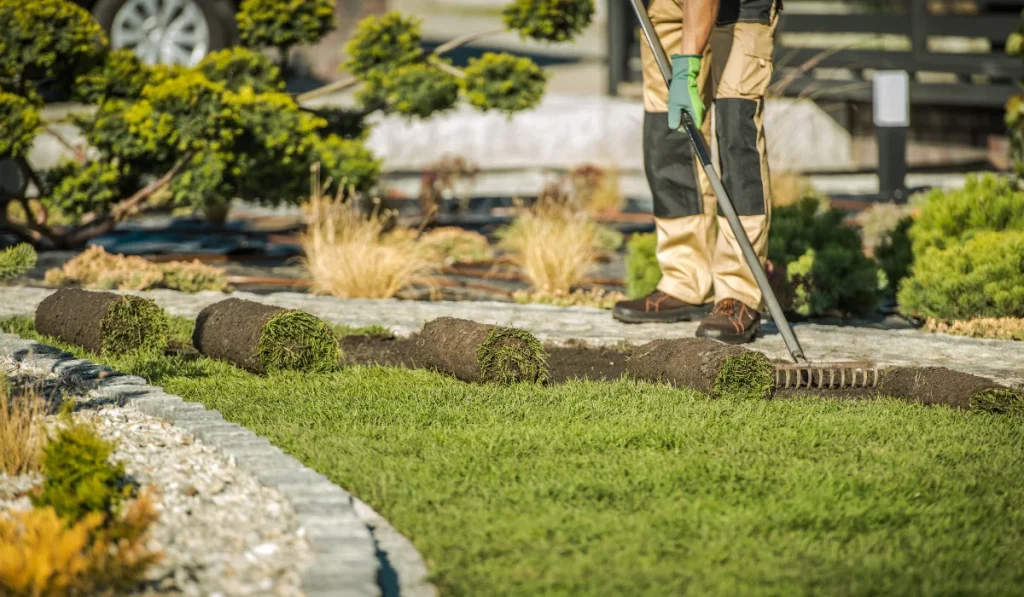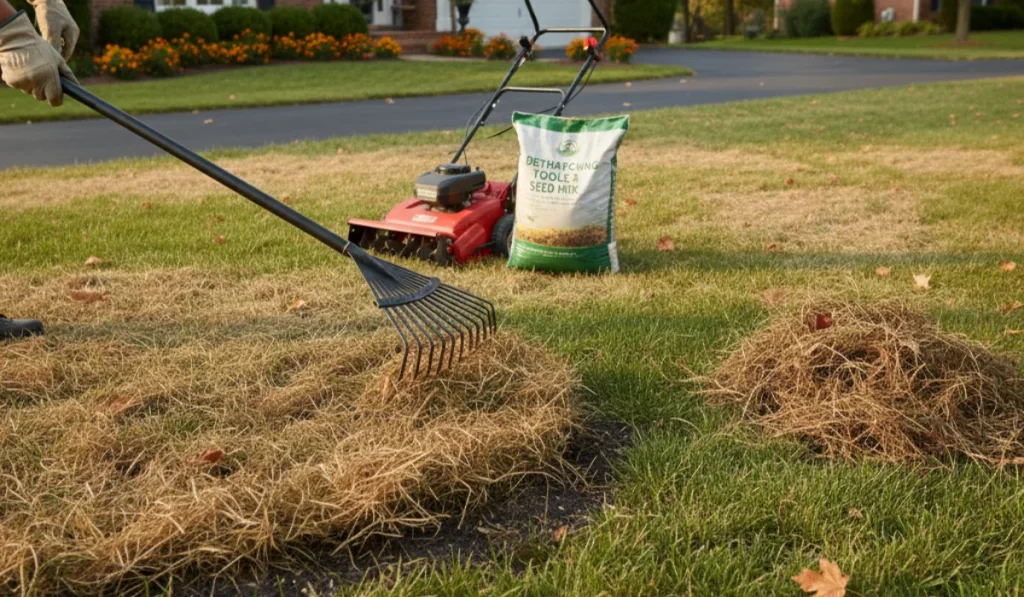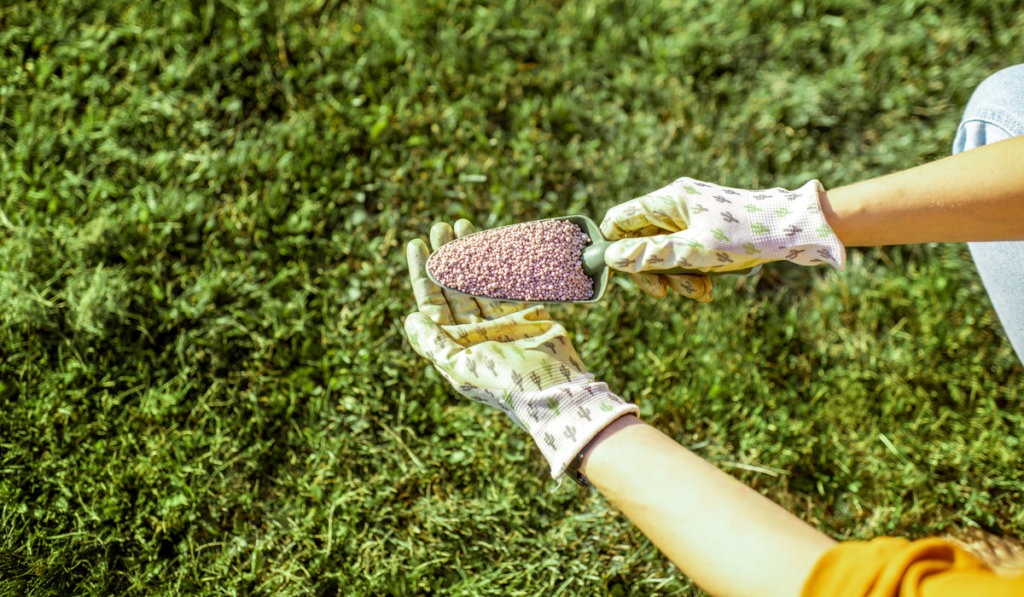Ever look at your brown, crispy lawn and wonder if it will ever be green again? It might seem like a lost cause, but you can revive your grass after a drought by understanding the proper techniques to revive it.
Keep reading to learn the necessary steps to make your lawn lush and green again.
Key Takeaways
- Assessment of lawn damage is crucial to distinguish between dead and dormant grass.
- Deep and regular watering in the early morning helps restore the lawn and reduce evaporation.
- Aeration of compacted soil improves root growth, water intake, and nutrient absorption.
- Proper mowing height and leaving clippings on the lawn support healthy recovery.
Step 1. Assess the Damage
Begin by evaluating the extent of drought stress on your lawn, a crucial first step in recovery. Inspect the entire lawn to note the difference between dead grass and dormant grass. Dormant grass might recover naturally with proper care.
Common signs of damage may include:
- Brown Patches: Indicates lawn disease or areas with dormant grass.
- Discolored Grass Blades: Suggests stress or damage.
- Bare Spots: Indicates severe drought impact or underlying soil issues.
- Compacted Soil: Hinders root growth and moisture absorption.
- Inelastic Grass Blades: Indicates damaged roots.
- Brittle or Dry Leaf Texture: Signals prolonged drought exposure.
Step 2. Water Deeply and Regularly
Deep and regular watering is important in the second step of restoring your lawn. Aim to provide about 1 ½ inch to 2 inches of water weekly to help the root system recover from drought stress effectively. But adjust based on your lawn’s needs, soil conditions, and climate.
The best time to water is early morning, when lower temperatures and reduced sunlight lessen evaporation. This ensures that more water reaches the roots and penetrates deeply.
For this purpose, you can use sprinkler systems, which help distribute water evenly across the lawn.
Step 3. Aerate the Soil
The third step in lawn recovery after high temperatures involves aerating the soil to combat compaction. This can impede root growth and reduce water and nutrient absorption.
Aerating the soil during the growing season allows for better air exchange. This process improves the health of the lawn by facilitating easier water intake and nutrient uptake.
It’s essential to focus on areas with heavy foot traffic, as they are more likely to become compacted and therefore require the most aeration.
Step 4. Mow Properly
The fourth step in restoring your drought-stricken lawn involves adopting proper mowing techniques. It is important to cut the turfgrass with sharp mower blades at an optimal height for its type.
For example, cool-season grasses like Kentucky bluegrass should be kept between 2.5 and 3.5 inches longer. In contrast, warm-season grasses, such as Zoysia grass or Bermuda grass, typically thrive at shorter heights, usually around 1 to 2 inches.
Step 5. Fertilize Appropriately
Fertilizing provides necessary nutrients that can aid recovery. The right type and amount of fertilizer will depend on the grass type and soil condition.
Here’s a starting point to use as a guide when fertilizing:
| Fertilizing Aspects | Details |
|---|---|
| Type | Use a balanced, slow-release fertilizer. |
| Timing | Apply 3-4 times per year, February and September are key months for pre-emergent weed control. |
| Application | Use a spreader for even distribution. |
The lawn must begin to recover before application. If you are unsure about your lawn’s specific needs, conduct a soil test analysis to see what nutrients are required. You can also consult a local lawn care expert.
Step 6. Overseed Bare Patches
During optimal times, overseeding can help fill bare spots and improve lawn density. Choose a new grass seed that matches your existing turf.
Step 7. Address Weeds and Pests
Weeds and pests can further damage a weakened lawn. Proper management is essential to ensure the newly revived grass thrives.
To control weeds like crabgrass, consider a pre-emergent herbicide that prevents weed seeds from germinating. For pests, apply pesticides on areas with visible damage or infestation.
Prevent Future Damage with Lawn Experts
If your new lawn is severely brown and patchy even after following basic revival steps for drought conditions, you should consider calling lawn care experts.
As experts, they can assess the damage and provide tailored solutions. They can recommend dethatching, overseeding, or specialized watering techniques.
Investing in lawn experts can lead to a healthy lawn that can better withstand future droughts.



